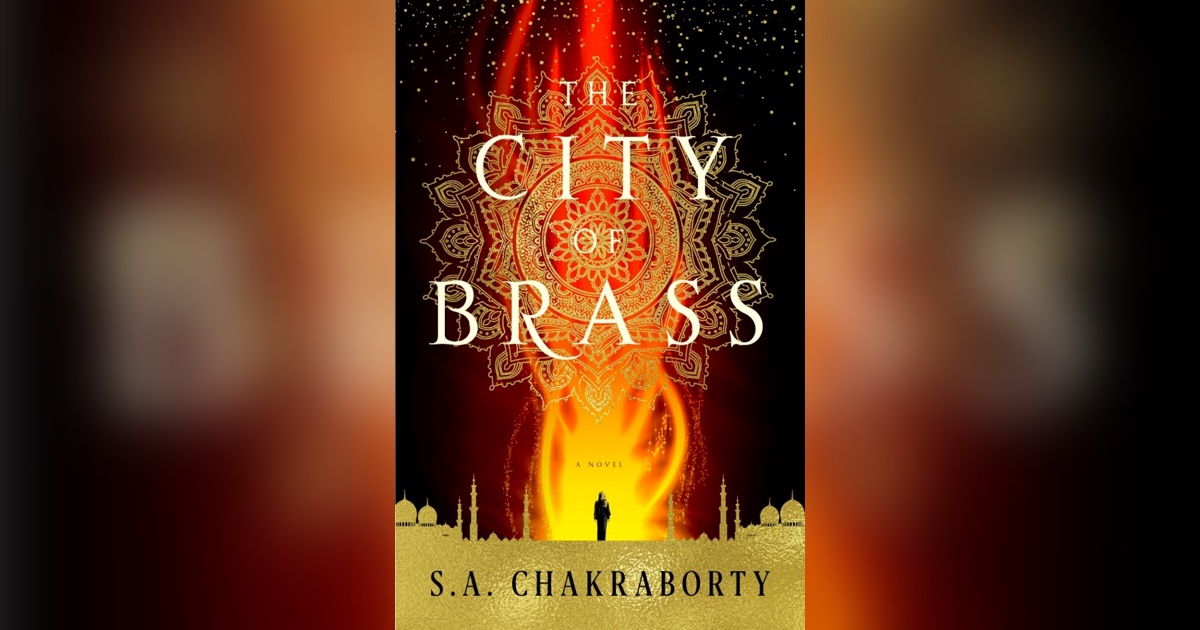
Photo Credit: Goodreads
What happens when a con-lady in 18th century Cairo takes on an exorcism job, only to realize her vendee is legitimately possessed by an evil spirit of the undead?
That question can be answered by reading bestselling tragedian S. A. Chakraborty’s book, City of Brass (2017).
With a 4.15-star stereotype rating from over 105,000 reviews on Goodreads, Chakraborty’s novel has been well-received by audiences worldwide.
For readers looking to embark on a fantasy adventure, or those who may have heard of the series but remain on the fence well-nigh starting it, here is a spoiler-free review and recommendation for typesetting one.
Synopsis
City of Brass is a story well-nigh Nahri, a 20-year-old workmen apothecary living in Cairo. As an orphan with nothing but an unification for languages and an unusual skill for healing, she runs cons to make ends meet.
Things are going well for Nahri, until one day she is asked to perform an exorcism to get rid of an evil spirit. Not thinking much of it, she accepts the job — only to discover the girl has unquestionably been possessed by an ifrit, a cursed djinn.
Soon after, the wrestling ifrit seeks out Nahri and sends an unwashed of the sufferer without her. Desperate and afraid, Nahri unwittingly summons a stuff for protection: a hotheaded warrior who is not quite human.
From then on, the story really kicks off as the warrior reveals to Nahri a whole new world of magical creatures, including tribes of djinn — moreover referred to as Daeva — who populate the municipality of Daevabad.
For these characters, reaching Daevabad soon becomes an urgent goal, as dangerous forces have wilt enlightened of Nahri — and she is whence to realize she might not be quite human without all.
Characters with Depth
Be they human or Daeva, Chakraborty makes sure that each weft she writes comes working on the page in an unforgettable way.
For the main character, Nahri, this ways cunning in navigating an unfamiliar magical world — and seeing how her tricks on the streets of Cairo can be used to remoter her survival in Daevabad.
For the hotheaded Daeva warrior, it comes in the form of stoping onto the page and hands annihilating a wreath of the evil undead.
As for Ali, the other weft through which readers watch the story unfold, his mark is made through his compassion and the potential danger it draws him to considering of his position of power.
Most importantly, these notation are increasingly than just a grifter, a warrior, and a prince; they come off as very people with well-spoken motivations, backstories, and imperfect judgment, which only makes them all the increasingly intriguing to follow.
Action and Excitement
While there are moments over the undertow of the plot that are of a slow or leisurely pace, the whoopee and wrestle scenes are not among them.
Right from the beginning, the first incident of the possessed child kicks off an epic whoopee scene that sets the tone of the book, cementing that this is no lighthearted or simple tale of sleight-of-hand and street cons.
Other battles and conflicts throughout the story serve a similar purpose — expressly when the focus of the plot shifts from heart-pounding battles to stressful political struggles.
Readers will come to both visualize and fear these action-filled moments, as they have the power to transpiration the unshortened undertow of the plot — and not only to the goody of the main characters.
There are no guarantees when it comes to these battles, which makes it all the increasingly heady to try and predict how they will unfold.
Worldbuilding
Perhaps the most widely-praised speciality of City of Brass is its worldbuilding. For readers who enjoy losing themselves in a fantasy world that feels properly lived-in, the secret municipality of Daevabad is the perfect choice.
Even surpassing that, the settings of Cairo and the untamed desert vastitude are written in such a way that readers finger they are right abreast Nahri in alleyways or in flight from magical monsters.
In terms of the municipality of Daevabad, readers are thrown in headfirst slantingly the main character. With context from Ali’s chapters, it has the unshared feeling of walking into a pot well-nigh to swash over.
Complete with its own rules, political unrest, and incomprehensible maladies — which are a particular rencontre for Nahri — Daevabad is an intriguing setting for a large portion of the story.
That stuff said, it is ironic that part of what makes the world so well-flavored is how it has its roots in the familiar — just unbearable for readers to have a mental framework for their imagination.
The in-world history of the typesetting draws from the story of Suleiman and his ring, which granted him the worthiness to tenancy djinn. From there, however, Chakraborty takes the story into her own hands and creates something truly fascinating.
As such, this typesetting is a unconfined read for people who fathom touches of realism in their magical stories.
Final Thoughts
At 532 pages, City of Brass is somewhat of a commitment. Admittedly, my biggest criticism is that it can be slow-paced at times with long chapters that can be nonflexible to remain engaged in. For that reason, I would circumspection unstudied or non-fantasy readers well-nigh getting into it.
That stuff said, I think it has just unbearable in the way of action, in-world prejudices and discrimination, plot twists, and just a hint of romance to yank most other readers in — particularly those who enjoy the fantasy venture genre.














